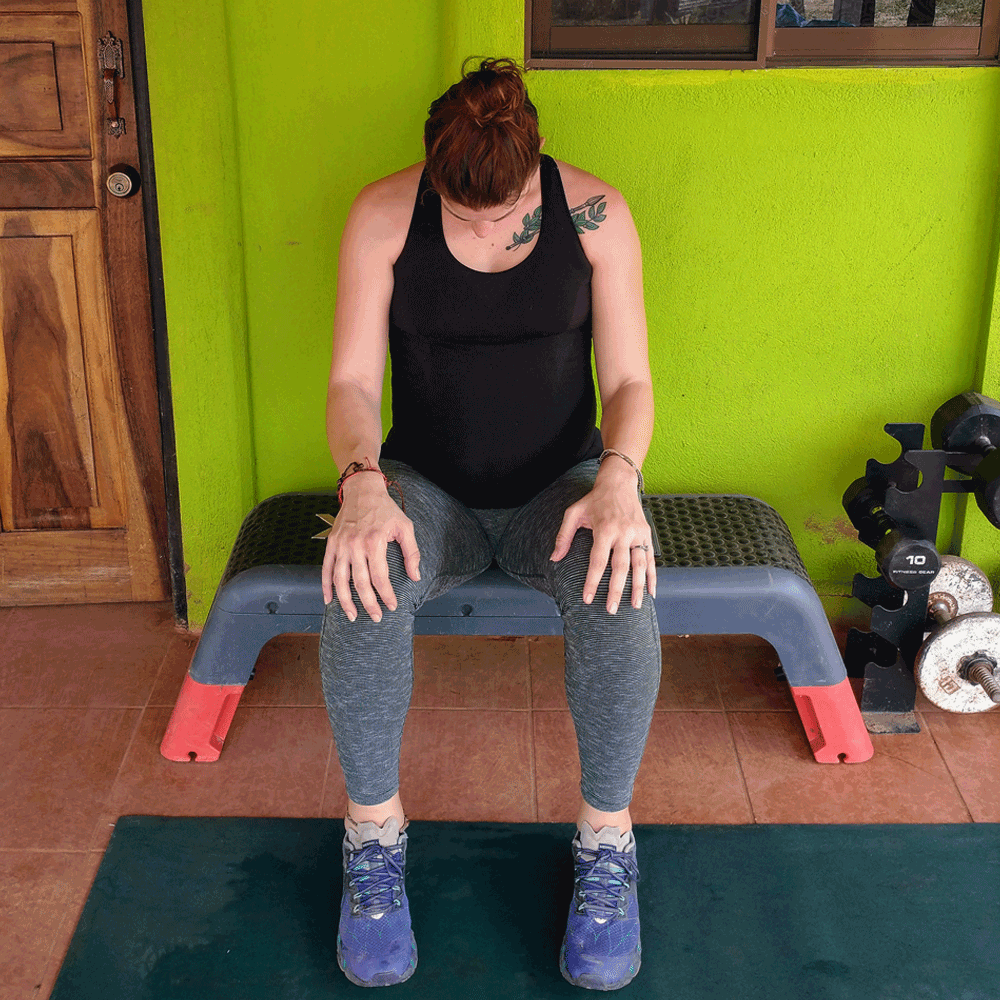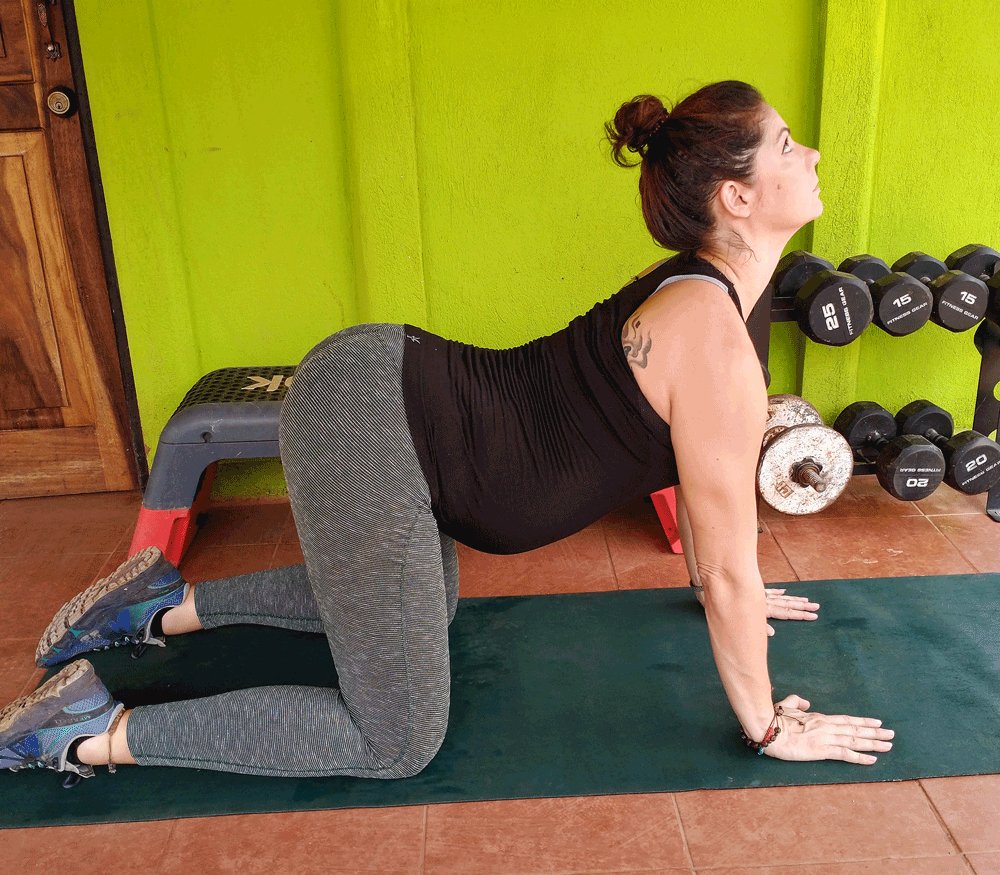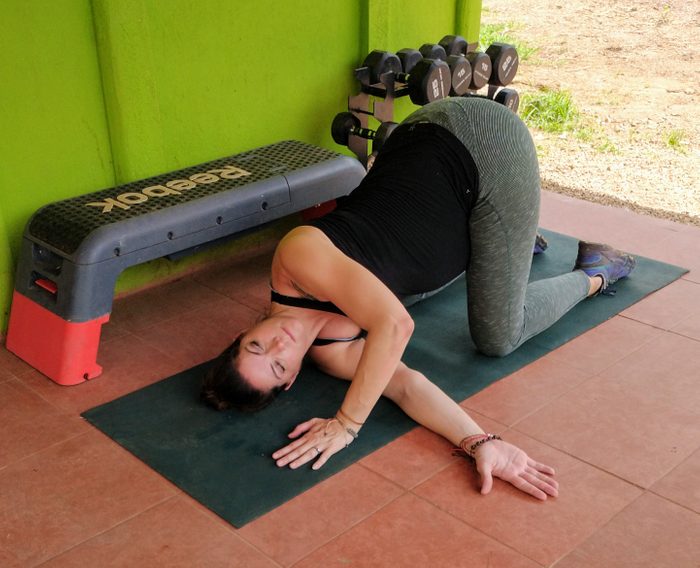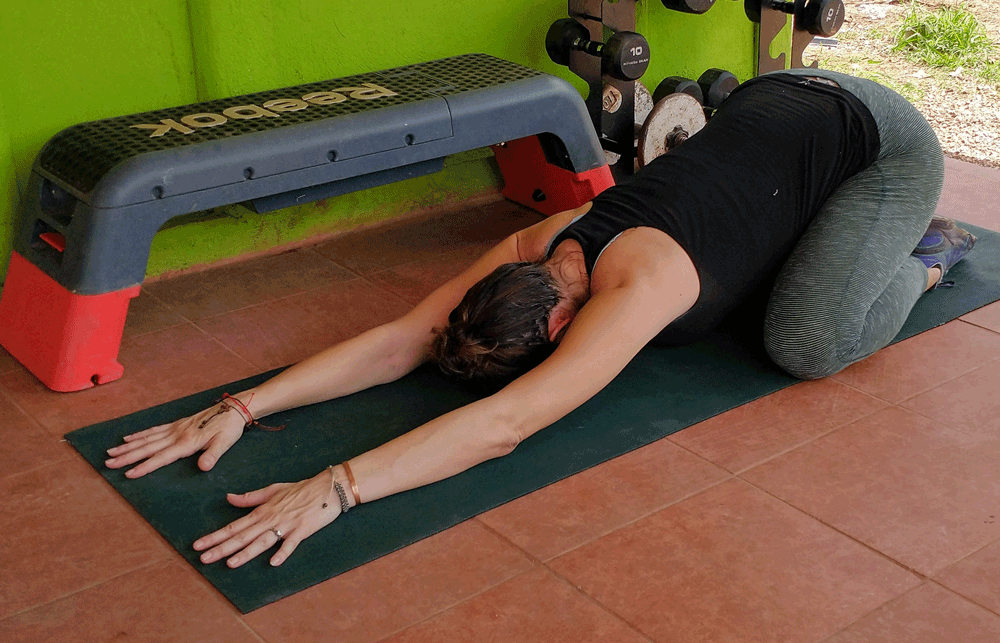4 Trapezius Stretches That Experts Recommend

Ease up tension in your neck, shoulders, and back with these trapezius stretches to maintain flexibility and range of motion.
Shrug your shoulders, shake your head, then move your shoulder blades around. These actions wouldn’t be possible without the help of the trapezius muscles. Your trapezius muscles are two large, triangle-shaped muscles that lie on either side of your neck and spine. (You might know them as “traps.”) When viewed together, they look trapezoid-like.
“The traps are a massive muscle with multiple attachment points in the body,” says Jake Harcoff, certified strength and conditioning specialist and the head coach and owner of AIM Athletic in Langley, British Columbia.
And while you may not spend a whole lot of time thinking about training or stretching your traps, the size and location of these muscles make maintaining their flexibility and range of motion particularly important.
(Related: Got a Stiff Neck? Here Are 10 Home Remedies for Neck Pain)
The problem with tight trapezius muscles
Tight trapezius muscles can lead to feeling tense in your shoulders. This is “because the trapezius muscles originate on the occipital bone of the skull, and travel along the neck before fanning out to their insertion points on the lateral most edge of the shoulder blade,” explains Harcoff. But it’s not just tension in your shoulders that can result when you fail to keep your traps limber. Tight traps can interfere with overhead shoulder motions, like reaching to put dishes away on high shelves, and can also cause neck pain, compression, and even tension headaches, explains Karena Wu, physical therapist and owner of ActiveCare Physical Therapy in New York City.
“It’s important to stretch these muscles out so you have more space to move in the neck, especially in the area where the nerve exits the spinal column so the upper arms can get good nervous system input for motor control and sensation,” Wu explains.
(Related: 4 Chest Stretches to Help Improve Posture and Reverse Slouching)
Causes of tight traps
If you find yourself tense at work or at home, or while driving through traffic, with a slight shrug in your shoulders, you’re essentially living with overused, overactive traps. And it’s not just due to stress, either. As Wu explains, bad posture plays a big role. if you sit at a desk with your elbows resting on the table, your shoulders shrugged and the rest of your body sagging, you’re inadvertently tensing your traps.
The first step to easing the tension and preventing resulting pain is to pay attention. Try setting a timer to go off every 30 minutes when you’re sitting still. When it alarms, check your posture. Shake out your shoulders and arms, roll your neck, and take several deep breaths to release any built-up tension.
Once you’ve reset your shoulders, neck, and arms, consider adding a stretch or two to help keep increased tightness at bay.
Trapezius stretches to relieve tightness
The good news is, it’s very easy to stretch out your traps, and you can add these stretches (suggested by Wu and Harcoff) before you leave for work, while you’re at the office, or while relaxing at home. The only thing to remember is that the traps are located on either side of your neck and are actually two separate muscles. This means it’s important to always stretch both sides, but if one side is tighter than the other, it’s okay to spend a little more time addressing the side that feels restricted.
(Related: 5 Stretching Exercises for Seniors—or Anyone Who Feels Achy)

Ear-to-shoulder stretch with variation
To really stretch out the upper part of the trapezius, you can try an ear to shoulder stretch with a few different variations. Sit or stand tall, checking your posture before you start your stretch. Your ears should be aligned over your shoulders and hips, your shoulders relaxed, and your core engaged.
Tilt your head forward, bringing your chin to your chest. Hold for 15 to 20 seconds, relaxing your shoulders down.
Then, side-bend your head to the left, bringing your left ear to your left shoulder. Use your left hand to place light pressure to your right temple, helping hold the stretch while relaxing your right shoulder down. Hold for 20 seconds, then repeat the sequence to the right side. Complete a total of two sets.
After you’ve completed the first rounds, you can hit the upper portion of the traps a little differently by performing the same series, but without bringing the chin to the chest first.
Simply bend your neck to one side, drawing your ear toward your shoulder while relaxing both shoulders down and hold the stretch for 20 to 30 seconds before repeating to the opposite side.
(Related: It’s the Summer of Two Wheels! Here Are Some Post-Ride Rituals to Try Now)

Cat-cow stretch
The cat-cow stretch is a nice, dynamic stretch to help you loosen up your traps when you feel tight while simultaneously encouraging articulated movement through your entire spine and neck. You’ll particularly feel the stretch in your traps when performing the cat portion of the sequence.
Start on your hands and knees on a mat in a tabletop position with your knees under your hips and your palms under your shoulders. Your spine should start in a neutral position with your body forming a straight line from your hips to your head.
Take a breath in and enter cow pose by pressing your tailbone up toward the ceiling, articulating your lower back as you allow your belly to “drop” toward the floor. Simultaneously, look up toward the ceiling, pressing your chest forward and widening through your shoulders.
At the top of your stretch, hold for a beat, then exhale to enter cat pose. Reverse the movement, tucking your tailbone under as you stretch round through your upper back and shoulders, lowering your neck between your arms. You should feel a good stretch through your neck and upper back and shoulders—exactly where your traps are.
Continue alternating between cat and cow stretch with each deep inhale and exhale for a total of 60 seconds. Complete three sets.
(Related: 4 Hip Flexor Stretches That Relieve Pain and Tightness)

Thread the needle stretch
This stretch helps target the mid-to-upper-back and shoulder. Start on your hands and knees in a tabletop position, just as you did for cat-cow. Your palms should be under your shoulders, your knees under your hips with your core engaged, and your spine neutral and straight from hips to head. Take a breath in and lift your right hand from the floor without shifting your weight or body to the left.
As you exhale, lower your right shoulder to the floor as you reach your right hand, palm facing up, under your left shoulder and across your body as far as you can. Stop when you feel a good stretch through the back of your right shoulder and upper back.
Hold, breathing deeply, for 20 to 30 seconds before returning to the starting position.
Repeat to the opposite side and complete a total of two to three sets per side.
(Related: 9 Ballet Stretches to Do for 10 Minutes a Day to Improve Your Flexibility

Child’s pose with side reaches
The child’s pose is an excellent relaxation stretch that can help ease tension through your mid-to-upper-back.
Start on your hands and knees in a tabletop position, just as you have for the other trapezius stretches. This time, once you’re set up in a neutral tabletop, bring your heels together, then sit back on your heels. If you want, “walk” your knees out slightly to create space.
Tip your torso forward, relaxing it between your thighs as you reach your arms farther overhead. Relax into this pose as much as you can and bring your forehead to rest on the mat. Stay in this position, breathing deeply for 30 seconds.
After 30 seconds, while keeping your hips and lower body steady, walk your hands as far as you can to the right, increasing the stretch through your left side. When you feel a nice stretch in your left upper back and shoulder, hold the position for 30 seconds.
After 30 seconds, walk your hands back to center, then as far as you can to the left, repeating the stretch to the opposite side.
Complete a total of two rounds.




